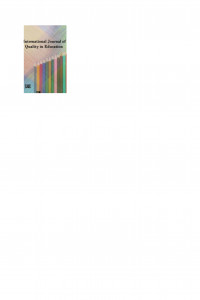LEARNING STYLES AND SCIENCE ACHIEVEMENT OF THE PILOT AND SPJ G-9 STUDENTS: BASIS FOR DEVELOPING DIFFERENTIATED LEARNING INSTRUCTIONS
Abstract
The primary objective of this study is to the determine and analyze the learning styles and achievement in Science of the Pilot and SPJ Grade 9 students of Casimiro A. Ynares Sr. Memorial National High School in the Taytay, Rizal. This study employed two adopted research in gathering the information regarding the characteristics of learners. Sixty-two Grade 9 students served as participants of the study. Purposive sampling method was used in selecting the participants of the study from the existing school population. After administering the Grasha-Riechman Learning Style Instrument to the participants, it was revealed that 21 or 34% of the student respondents are dependent learners, 20 or 32% are collaborative learners, ten or 16% of the learners are independent, six or 9% of the class are competitive, five or 8% are participant and none of the of the respondents are avoidant learners. The second instrument administered to the students respondents was the VARK questionnaire, after the tabulating the results of the survey it was revealed that 42 or 68% of the respondents are kinesthetic learners, 15 or 24% are audio leaners, 3 or 5% prefer learning through reading and writing and the remaining 2 or 3% are visual learners. Results indicates that there is a significant difference between the achievement of learners when grouped based on the Grasha-Riechmann learning style. On the other hand, there is no significant difference among the achievement of learners when grouped based on the VARK learning modalities. In the light of the findings of this research, it is recommended that teachers should assess the learning styles and modalities of their students to be able to create a teaching-learning plan that best suit their needs and must consider that learning acquisition varies, instructions, activities, and learning materials to learners must be differentiated.
References
- Abidin, M. J. (2012). Learning styles and overall academic achievement in a specific educational systems. Kuala Lumpur: University Sains Malaysia.
- Amin K. & Rajaei, M. (2013). Impact of students' style of learning on their preferred style of learning. Journal of Educational Psychology.
- Baykul, Y. (2010). A validity and reliability study of Grasha-Riechmann student learning style. Istanbul: University of Yeditepe.
- Bostrom, R. P., Olfman, L., & Sein, M. K. (1990). The important of learning style in end-user training. MIS Quarterly.
- Bonham, L. A. (1988). Learning style use: In need of perspective. Lifelong Learning.
- Department of Education (2013). K to 12 Curriculum Guide in Science. Pasig City:Department of Education
- Department of Education (2014). Science Module Grade 9. Pasig City: Department of Education
- Department of Education (2016). DepEd Order 42 series 2016. Pasig City: Department of Education
- Dunn, R. (2011). Learning style/teaching style should they, can they be matched? New York: Educational Leadership.
- Ferrier, M. A. (2007). The effects of differentiated instruction on academic achievement in a second-grade science classroom.
- Flemming, N. (2001). Visual, auditory and kinesthetic (VAK) learning style model. Retrieved from https:// martimurphy.com/pdf/VAK_Learning_Style_Model.pdf.
- Felder, R. M & Henriques, E. R. (1995). Learning and teaching styles in foreign and second language education. Foreign Language Annals.
- Fisher B. & Fisher L. (2011). Styles in teaching and learning. Colorado: Colorado Department of Education.
- Fleming, N.D. and Mills, C. (1992). VARK a guide to learning styles.available at: www.vark-learn.com/English/index.asp.
- Grasha, A.F. (1996). Teaching with style: A practical guide to enhancing learning by understanding teaching and learning style. Pittsburgh: Alliance publishers.
- Grasha A. F, Riechmann S.W. (1989). A rationale to developing and assessing the construct validity of a student's learning styles scale instrument. Journal of Psychology.
- Izadi S. & Mohammadzadeh R.A. (2008). Investigating the relationship between learning styles, characteristics and performance students, Daneshvar; 14(27), 15-30
- Kabadayı, A. (2004). İlköğretim Öğrencilerinin Bilişsel Öğrenme Stilleri ve Cinsiyetlerine Göre Karşılaştırılması: Konya İli Örneği. Ondokuz Mayıs Üniversitesi Eğitim Fakültesi Dergisi, 18, 1- 16
- Kabadayı, A. (2007). Analyzing the cognitive teaching styles of preservice and cooperating preschool teachers in Turkey. Early Child Development and Care, 177, 275– .doi:10.1080/03004430500473276
- Kabadayı, A. (2012).Determining the Preferred Learning Styles Modes of the Prospective Preschool Teachers through LSS in Turkish Context, Journal of Educational and Social Research, 2(5), 111-118.
- Khalid, R. (2013). Learning styles and academic achievements among arts and sciences students. Kuala Lumpur: Universiti Utara Malaysia.
- Lamina, O. G. (2020). Peer-led team learning (PLTL), student engagement and achievement in science. Social Science Research Network.
- Logan, K., & Tomas P. (2002). Learning Style of Distant Education Learning. United Kingdom: UK Open University.
- Uzuntiryaki, E. (2007). Learning styles and High School Students’ Chemistry Achievement. Turkey: Middle East Technical University.
Details
| Primary Language | English |
|---|---|
| Subjects | Studies on Education |
| Journal Section | Articles |
| Authors | |
| Publication Date | June 3, 2022 |
| Submission Date | February 10, 2022 |
| Published in Issue | Year 2022 Volume: 6 Issue: 2 |

